Alivation Pharmacy
Understanding Traumatic Brain Injury
EEGs and Baseline Measurements
About TMS
Alivation in Perspective
Alivation Pharmacy
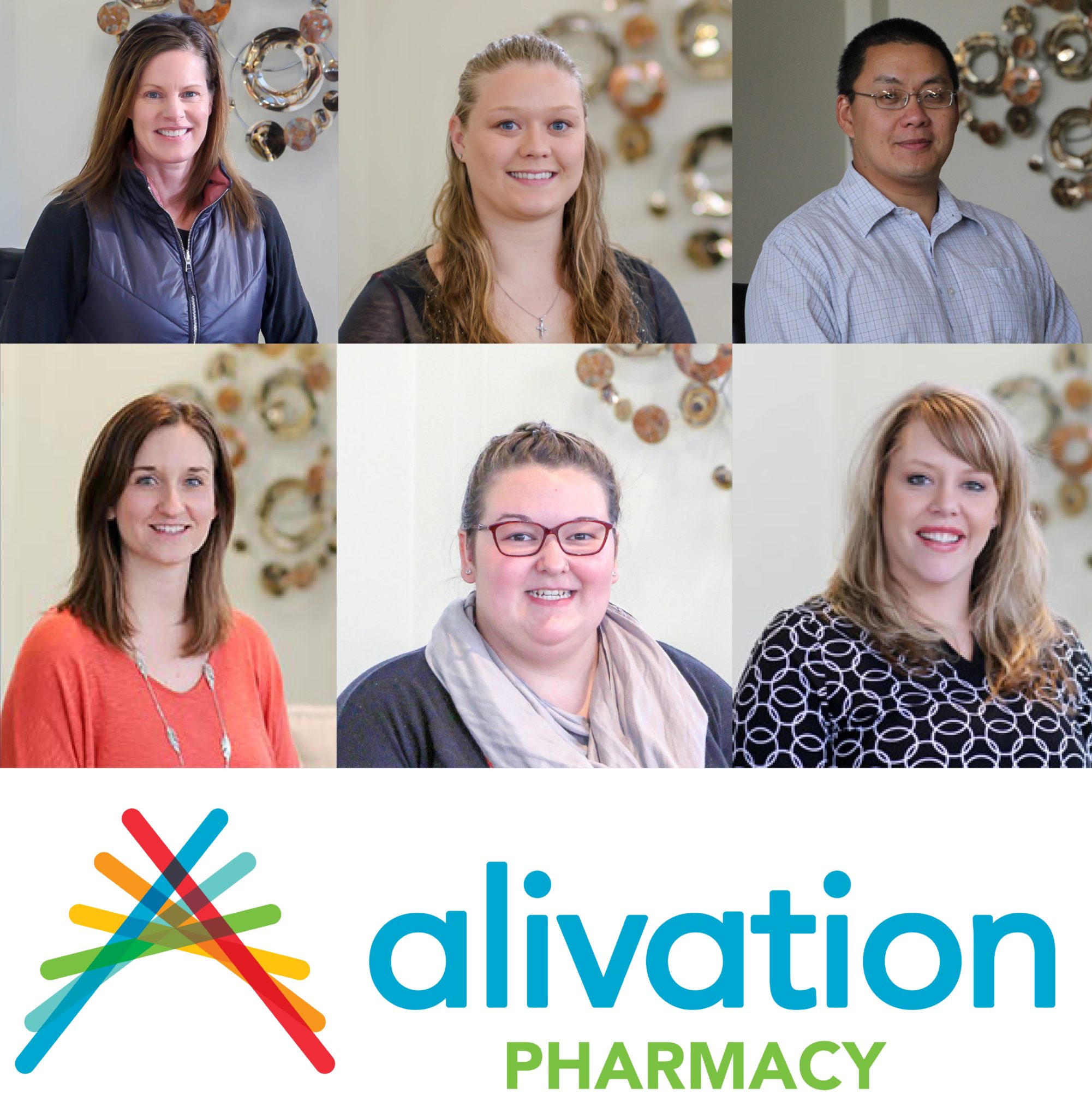
There are three affiliates branded Alivation including Alivation Health, LLC (our clinical services), Alivation Pharmacy, LLC, and Alivation Research, LLC. Of those three, the pharmacy acts with the most autonomy. It’s structured to be a third branch of Alivation, but also is an independent unit that can fulfill outside prescriptions—even for those who aren’t patients here. This allows it to service more people and fill more needed prescriptions. Behind the counter at Alivation Pharmacy you’ll find several friendly faces. Rachel is the pharmacy manager; she works closely with Brenda and Peter, the pharmacists, and Dawn, Emily and Rikki, pharmacy technicians.
Part of what makes Alivation Pharmacy unique is the integrated approach it takes, as well as the convenience. They provide better care by collaborating with providers to ensure adherence. This also removes communication barriers by instant provider accessibility: they’re down the hall if questions arise. There is no disconnect between provider prescription and pharmacy fulfillment.
The pharmacists can fill what are called bubble packs, separated bundles of medications listing doses and times to take them. They work great for children at school, or patients at day programs or in group homes. This service is offered for free. All medications can be filled on the same day, and the pharmacists will work with your insurance to clear the prior authorizations. They offer mail delivery for patients who can’t make the trip, free of charge, and text and email reminders for refills. They provide free medical disposal of medications.
The pharmacists also search for additional savings methods for patients with higher copays. They hunt through manufacturer coupons, patient assistant programs, and sometimes do it the old-fashioned way and call the insurance providers directly. Doing this, they can find alternative medications, other formulary options, or in-house loyalty programs. Patients have said, “No other pharmacy takes the time to do this for patients.” Recently, a new patient called just to say the pharmacy went above and beyond, and that he was thankful he switched to us.
What’s more, the pharmacists care. Patients have often remarked how amazed they are that their names are remembered, as are other details. There’s a personal touch that other pharmacies simply lack. It matters. You won’t find Alivation’s pharmacists hustling you out the door as soon as they can. They want to chat with you, and they enjoy it. Getting to know our patients on a personal level makes their care that much easier and helps us advocate for them. On average, the pharmacy fills between 200-300 prescriptions daily. They fill bubble packets for about 90 patients a month. For a staff of six people, that’s a lot of effort, but the team makes it work.
Another way they’re proactive? The app.
Alivation Pharmacy has a mobile app downloadable on iPhone or Android. You can easily view your profile, customize preferences and set reminders, get text and email notifications when your prescriptions are ready for pickup, and access the pharmacy team. The free app is the definition of integrated care, working seamlessly with you and your pharmacists for the entire process to get you what you need, when you need it. They work with insurance companies and patients together, ensuring all medications are aligned and accurate. They call this medication synchronization.
If our pharmacy goes above and beyond in all things, it’s because we believe in doing that for our patients. Every branch of Alivation lives up to the slogan Next Level You because that’s what’s best for patients. We don’t settle for halfway there, we go the entire distance.
Understanding Traumatic Brain Injury
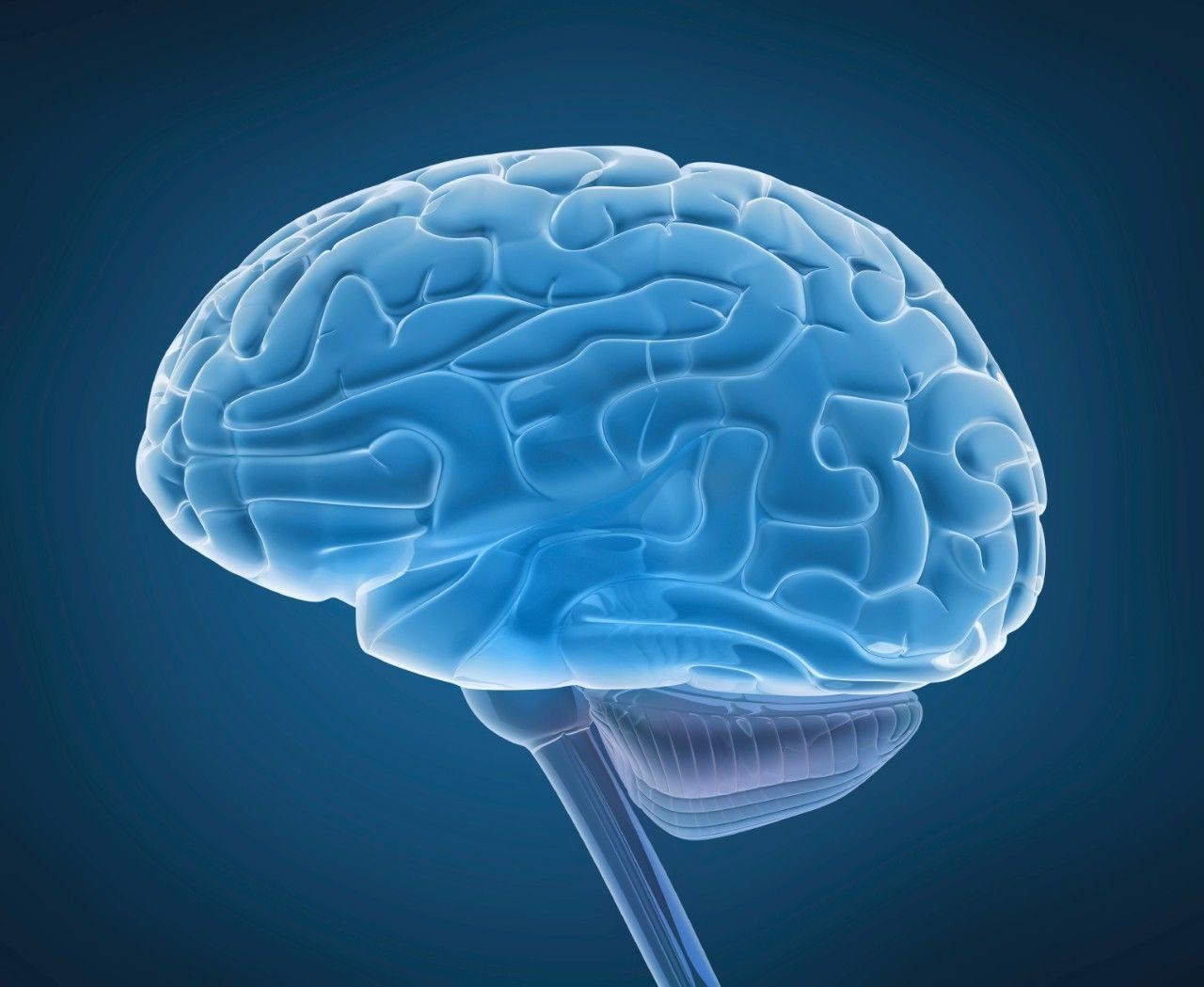
When most people think of traumatic brain injury (TBI), it’s what is seen on the news: concussions, predominantly from sports. Each year we’re deluged with articles about football head injuries, players suing organizations, and even a movie starring Will Smith, Concussion, about this topic. In less than two years, concussion settlements in the NFL hit $500 million. Is TBI, then, only an issue for professional athletes?
Not even close.
It starts with recognizing what TBI is. The cause of TBI is a blow or jolt to the head and body. The main symptoms are headaches that get consistently worse, vomiting or nausea, slurred speech, weakness or numbness in arms and legs, dilated pupils, and in serious cases, seizures or convulsions. Symptoms may not appear for days or even weeks later. Sometimes there are rapid changes in moods or emotions. TBI injuries can lead to permanent brain damage. Recovery from TBI can be a long, complex process, and in severe cases will require rehabilitation. In the most severe cases, TBI can prove fatal.
It’s important to remember that though concussions are the most well-known example of TBI, they are not the most prevalent. Half of all TBI cases are from motor vehicle accidents. Many times, TBI is the result of a slip or a fall, and often the person does not even realize they’ve had an accident that requires neurological attention. Even after the onset of symptoms, treatment is prolonged, or the person doesn’t believe anything is wrong. The dizziness, tiredness, pain in the head or neck is dismissed, not considered related to the fall. Domestic abuse victims also experience TBI, with the vast majority never receiving a formal diagnosis, according to The New Yorker.
In the home, the causes of TBI are falls down the stairs or in the bath, down ladders or on slippery surfaces. Children are often susceptible to these types of incidents, making it crucial to be on the lookout for signs and symptoms. Motor vehicle collisions are a culprit for both children and adults. Sports injuries are extremely common in youths. For those in the armed forces, explosive blasts and combat injuries can cause severe TBI.
For preventing TBI in motor vehicles, the best options are seat belts, child safety seats, roll bars and airbags. In sports, softer baseballs are used to decrease the severity of possible head injuries, helmets are designed for lessening the effects of impacts, and rules are in place for preventing dangerous contact moves, such as “spear tackling”, that might directly cause injury. On playgrounds, shock-absorbing surfaces, such as mulch or sand, also help prevent injuries for falling children. Public health campaigns are also enacted to encourage safer actions in both children and adults alike.
Still TBI happens. For example, in 2013 according to the CDC, there were approximately 2.5 million TBI-related hospital visits, and approximately 56,000 deaths from TBI. The rate of mortality was highest for those aged 75 years and older, with falls being the leading cause. This is clearly no small problem. So, when it does occur, how does Alivation treat it?
At Alivation, we also use EEGs (electroencephalograms) and our Brain Health Monitoring system to record electrical activity in the brain. An initial EEG establishes a point of reference. This reference point allows your provider to compare subsequent EEG results, and equips them with critical data about how your brain is processing information. This helps us later in treating patients by showing them they’ve had an injury, and how it has changed their brain’s normal processes. We also do this to show how your brain is healing, so we can deliver the best care for optimal brain health.
In many cases, patients do not realize they’ve had a brain injury until they’re shown the direct evidence of it. Despite noticeable mood swings, emotional shifts, headaches, and other outward signs, it is only with the assessments that patients can visualize what exactly has happened. Once discovered, the injury can be treated properly. TBI isn’t like a muscle or skeletal injury—it can take far longer to heal, and in some cases may never entirely heal at all. The financial burdens can be overwhelming, and for many, recovery is a difficult process. On top of the medical methods, such as scans and medications, therapy and emotional support are crucial. Alivation is the Next Level of care by offering those lines of support, and never losing hope. We encourage the patient to keep working, and we encourage ourselves to find new ways of preventing and treating TBI.
If you’ve had head trauma and detect any of the following symptoms, or if you see the symptoms in others who may have had it, please come see us immediately:
- Headache
- Blurry vision
- Dizziness
- Irritability
- Nervousness or anxiety
- Mood swings
- Sensitivity to noise or light
- Changes in sleep patterns (lack of sleep, inability to fall or stay asleep)
- Trouble concentrating or thinking clearly
- Nausea, vomiting
- Any sort of unexplained seizure or convulsion
EEGs and Baseline Measurements
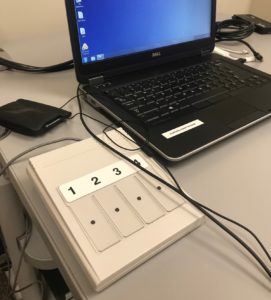
It’s a simple principle: to know what’s wrong, you need to first know what’s right. In daily life, this is a principle we take for granted. For instance, we know that when it’s raining, it isn’t sunny, and vice versa. To establish a normal pattern is called a baseline. Seems easy enough, right? For the longest time, this was the goal in mental health as well. There was only one problem: How does one establish a normal baseline for a human brain?
The answer is through EEGs.
EEG stands for electroencephalogram. You’d be forgiven for only using EEG—we do, too. We can barely fit the full term on our educational materials. Here are the prime things an EEG monitors for:
- Overall brain health
- Cognitive agility
- Anxiety and depression
- Attention
- Concussions
- Mood
- Quickness of thought
- Working memory
- Medication evaluation and effectiveness
It is also helpful in monitoring for strokes, tumors, sleep disorders and head injuries.
When Alivation uses EEGs for baseline assessment, we call it Brain Health Monitoring. It detects and records electrical activity in your brain. Using auditory stimuli to measure your brain’s response (recognizable sounds, tones, etc.), our technicians administer the assessment. This aids in the development of treatment plans for our patients. It’s a remarkably clear, objective way to establish that baseline, and provide the best possible care.
The actual monitoring process takes about twenty minutes. Application of the net, a series of nodes placed on the scalp for electrical measuring, takes around ten. It uses what are called touch tones, where the person being monitored actively touches a button when they hear a certain sound. It’s encouraged that patients relax, try to control their blinking, and not clench their jaws. This helps monitor the baseline, and keeps the screen from difficulty picking up signals. The more relaxed and open, the better the results.
The net used to monitor the brain is soaked for several minutes in a solution of salt water and Johnson & Johnson Baby Shampoo. They aren’t entirely sure why—something in the shampoo, and only that shampoo, makes the connectivity work wonderfully. Probably not what the makers of the shampoo had in mind when they manufactured it, but that’s one of those interesting side uses science discovers.
When the net is removed, you’re free to go. After the assessment, the data is translated into 3D maps of your brain activity. This will help the provider build a specific treatment plan. Around two weeks after, you’ll be scheduled to review your results with your provider. This will help them provide that Next Level Care we promise to our patients—we believe in it. Dr. Duffy has treated countless patients this way, and the benefits are overwhelming. The ability to have a measurable scan of brain activity is very useful for determining when something is out of order.
EEGs are an excellent way to see into something previously off-limits to outer eyes: the human brain. What could be more useful for mental and behavioral health treatment than a direct window into its processes?
About TMS
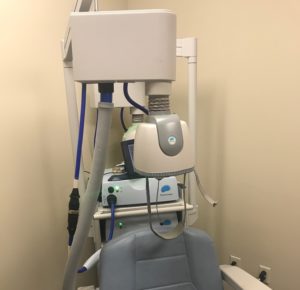
Transcranial Magnetic Stimulation.
It’s called TMS, but that’s its official name. Now you can see why we call it TMS—it’s just easier to say. It has a large variety of uses: Depression, Bipolar Depression, Post-Traumatic Stress Disorder (PTSD), Anxiety, Parkinson’s, Tinnitus. For many patients with these conditions, and who have not responded to other treatments, TMS has proven extremely effective. It also has the benefit of being drug-free, noninvasive, and FDA approved. Alivation is one of the best—and largest—providers of TMS in the United States today. Dr. Duffy has been a leader in TMS, having treated more than 800 patients, and delivering over 24,000 sessions.
One of the biggest benefits to TMS is the lack of pain. When people hear the treatment name, they assume it must at least cause a headache. It doesn’t. At most, some patients feel a mild tapping sensation, and possibly light pressure on the targeted areas after. Compared to the side effects that can be experienced with prescription medication to treat these same conditions, that’s a walk in the park. Each session lasts around 20-25 minutes, and the treatments vary from, on average, 31 to 36 sessions. There is no anesthesia or sedation, so you can drive yourself home after the treatment without worry. There is no pain.
Alivation was one of the first to provide this service in the region. We started back in 2011, during the Premier Psychiatric days, and it’s been one of our core services ever since, and something we proudly offer. There are a variety of reasons for this, but the primary one is simple: it works. TMS has proven to be very effective, and the resulting positive life benefits for patients have been noticeable. In terms of Next Level Care, this is it. When we first became interested in TMS, it was still considered experimental. Now it is FDA-approved, with a host of peer-reviewed studies done by medical journals corroborating these findings, according to Harvard Health.
Of course, patients are always a little bit hesitant when they see the machine. It’s natural to be nervous for a new treatment. The machine cycles through pulses as it works; it sounds a bit like an AC unit. Over the course of each session, the machine will make various sounds, nothing particularly loud. Some patients have been known to find the experience soothing, and will actually fall asleep during it. They are woken up, however, as one needs to be awake during the treatment. It is also recommended to think about positive things, good thoughts. Patients who are optimistic, hope for a positive outcome and desire treatment are more likely to benefit from TMS. Those who make lifestyle changes concurrently with it have excellent benefits.
There are four TMS machines at Alivation: three are in active use, one is in research. Alivation has regular appointments for use in all of them. Since 2011, the use has gone steadily up. Taeler and Tony, Patient Services Care Coordinators at Alivation, said the effect on patients is outwardly noticeable. Many will come in sunken, downbeat; by the end of their session cycle, they are more alert, friendlier. Many begin to view the TMS process itself as a positive experience in their lives, and enjoy the interactions with the providers and care coordinators. Alivation’s providers, in turn, enjoy seeing the patients’ quality of life improve so drastically.
We have experience sheets for patients to fill out, to make sure they’re getting the most out of their experience. The results are often incredible:
Patient before TMS: “Most of the time I was exhausted & worried. I couldn’t even function most days. I felt completely worthless.”
Patient after TMS: “I have gotten my first job in 5 ½ years. I am looking forward to tomorrow. I have more energy. I enjoy doing things for myself.”
One simply said, “I now have hope.”
There are dozens like this, patients hobbled by depression freed from it. Many report better relations with friends and family, more hobbies, lifestyle changes, new jobs. One referred to themselves as “a productive citizen” who “found my self-worth” after. From a medical standpoint, these are the kind of things that keep us going. But when a patient says they felt they were failing at life, had no worth, fantasized daily about suicide, and then turns into an active, happier individual, the polar opposite to where they were when they started? Then that makes everything we do worthwhile.
Alivation in Perspective
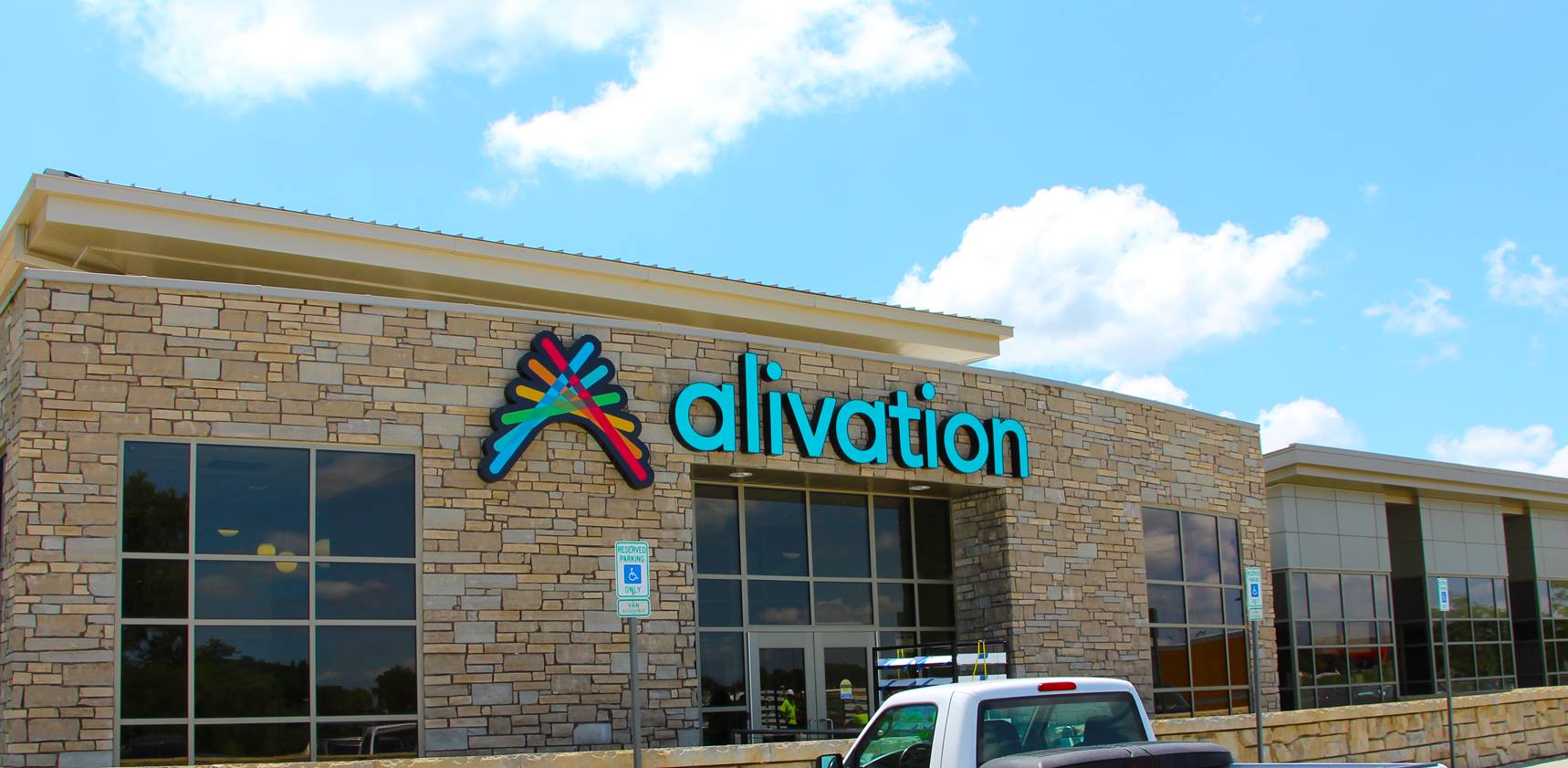
Lincoln is home to any number of medical complexes. Numerous mega hospitals, clinics, and other medical centers are just part of our landscape at this point, cultural and physical. You can’t drive a mile without seeing several dotting the eyeline; we all know people employed by them. The question becomes: if everything looks alike, how do you stand apart? What makes one facility pop out from all the rest? How can we be memorable?
Alivation could go bigger, that’s an option. Start as a family clinic, end up with a helipad and fleets of vehicles with our logo on it. Fun, but not really the direction we wanted to go. None of us have pilot licenses, besides.
So we found a different way.
Rather than expand ourselves outwardly only, we expanded inward. We invest in people and technology foremost. Our size is always in response to our needs. We’re like a goldfish in this way, expanding to meet the size of the bowl. Our building is big, but we could always go bigger. There’s enough room in the Midwest for it, and Lincoln and the surrounding communities have demonstrated a need for our services over the years. Where there’s a potential need, we provide access.
As a facility, we have the same sorts of conundrums many medical facilities do. We are sometimes faced with a massive influx of people needing care, and the ability to see them all on a timely basis. No one, least of all our staff, ever wants patients to wait for longer than necessary. We know this because we, the staff, when we’re patients for the doctor or the dentist, don’t like to wait longer than necessary, either. Doctors are also the fussiest patients, we should mention.
There is the recurrent headache of the paperwork, which is a necessary evil. We need as much information as we can get to do the best job possible. We try to provide transparency, and we ask it of our patients and prospective patients as well. It’s one of those old rules we still value: honesty is the best policy. Early disclosures of signs and symptoms is the fastest path to recovery and optimal treatment.
To better meet demand, we’re always selecting new providers, or looking for opportunities to work with other clinics. Growing pains are a side effect of rapidly expanding our treatment and service options. The old saying is “Fast, cheap, good—you can pick two.” We don’t bemoan success, and we won’t begrudge holding higher standards for ourselves and trying to have all three. We want patients to have access to the best care, as quickly and as affordably as possible. That’s the fundamental equation we strive for.
Do we succeed at that?
We think so, but we will never stop trying to do better. Whenever a family has had to wait too long in the lobby, we’ll improve that. Whenever patients need adjustments in their care, or they need to try something different—we work on that, too. There isn’t a day when we don’t consider needs. It simply isn’t in our company DNA to sit idle, rest, or ignore feedback and the opportunity to improve. We’re as active as we can be, and Alivation is always busy with people moving fast down the halls.
All this counts toward our inward expansions, helps us be a better facility. We won’t leverage it into a beautiful but overly large center we don’t need, but rather utilize it into a place everyone is proud to call their own. When the time comes for patients to seek care, we like to be the ones they remember.
